E' anche il motivo fondamentale per cui ho iniziato a creare questo blog e chiamarlo StorieeFoto.
Si parlerà di un aereo.
Vi chiederei, dato che tutto quello che faccio è per passione, se poteste gentilmente fare un click sulle pubblicità a destra. In tasca mi viene qualche centesimo e mi copre quelle poche spese di dominio e sito internet.
Grazie a tutti quelli che avranno voglia di leggere questa storia.
Seguitemi con tutorial e guide anche su youtube, iscrivetevi al canale di STORIE E FOTO
PREMESSA
Non sono uno storico, quello che ho scritto è frutto solo della passione per la storia e la voglia di far luce su un evento poco noto della valle in cui sono nato e cresciuto, la Val Corsaglia. Chiedo perciò scusa ai puristi del settore per non aver seguito alla lettera le tecniche d'intervista e di ricerca cartacea. A volte riscrivere in modo accattivante la storia non è stato semplice anche perchè contemporaneamente si sovrapposero più fatti che ci fecero proseguire nello studio.
Ho cercato di dare comunque un filo logico alla storia, anche se nella realtà certi tasselli arrivarono prima di altri e vennero compresi solo in seguito.
Essendoci, secondo me, ancora spazio per nuove scoperte, chiedo a chiunque abbia informazioni a riguardo di contattarmi.
In ultimo ho deciso di pubblicare online questo scritto in forma completamente gratuita perchè mi sento un po' in debito col web da cui ho preso e appreso tanto sia durante i miei studi sia nella vita di tutti i giorni.
Tutto parte nell'estate del 2008, quando parlando con un amico di Torino, Lorenzo, ad un certo punto mi dice:
"Lo sai che dalle tue parti è caduto un aereo tedesco nella seconda guerra mondiale?"
Resto un attimo a pensare, ma l'unico aereo di cui avevo sentito parlare precipitato nella bassa provincia di Cuneo è un B-17, precipitato sulla Bisalta sopra al Gias Vaccarile, ampiamente trattato nel libro Ali Spezzate di Sergio Costagli e Gerardo Unia edizione L'arciere. Poi so di un caccia inglese caduto a Villanova Mondovì in località Sibilla, ma di questo parleremo in un futuro post.
Di aerei tedeschi che io sappia nemmeno l'ombra.
Ma Lorenzo insiste, addirittura qualche anno prima era andato nella piccola borgata di Fontane ed era riuscito a circoscrivere la zona d'impatto, poi a causa la distanza e impegni vari non era andato avanti con le ricerche.
Fortuna vuole che in quel periodo ero solito passare le mie serate in un pub in cui lavorava una ragazza che vive proprio in quella borgata tra i monti della Val Corsaglia.
Ecco uno scorcio del piccolo paese.
Una sera tra un'ordinazione e l'altra le chiedo se non avesse mai sentito storie relative ad un aereo caduto da quelle parti dai suoi nonni o anziani del paese, mi dice subito di si, ma non sa nulla di più. Nuovamente la fortuna mi aiuta. Suo nonno all'epoca era bambino e fu tra i primi a visitare il luogo d'impatto i giorni seguenti.
Mi faccio lasciare il numero e il giorno dopo telefono, purtroppo è malato, parlo con la moglie che mi dice di richiamare dopo una settimana. Trascorrono quindici giorni, non mi sembrava giusto dare fastidio proprio a chi avrebbe potuto aiutarmi, richiamo e il simpatico nonno mi dice che purtroppo non si è ancora ripreso e non può accompagnarmi però, dopo un breve racconto, mi spiega dove l'aereo impattò.
La zona è nei dintorni di Stalle la Penna, all'epoca mi racconta era tutto pascolo, ora solamente la parte in alto è ancora così, in basso è cresciuta una faggeta. Mi dice che il punto dove trovarono i rottami fu proprio dove adesso iniziano le piante.
Inoltre mi da anche due dati che poi si riveleranno importanti, l'impatto avvenne di notte e c'era molta nebbia, gli abitanti della borgata sentirono un forte rumore nella notte, ma capirono cosa era successo solo il giorno dopo. Non videro nemmeno il fumo che si generò con l'incendio dell'aereo per tutta la notte. Se ne accorsero invece gli abitanti di un'altra borgata poco distante che guarda la zona, Seccata, che arrivarono sul luogo d'impatto il mattino seguente e raccolsero le vittime.
Detto fatto, tempo di organizzarci e si parte per il luogo dello schianto.
Luogo magnifico e suggestivo con alcuni ruderi, probabilmente all'epoca erano abitati, sarebbe proprio bello trovare qualcuno che viveva li.
Si vaga per i prati e i boschi alla ricerca di qualcosa che possa farci capire il luogo esatto, siamo in 5, Lorenzo, François, Manel, Alberto e Io, tra tutti dovremmo trovarlo.
Ad un certo punto proprio dove iniziano le piante c'è un roccione e sopra paiono esserci macchie nere oleose diverse dal colore delle rocce intorno. Con una zappetta scaviamo un po' intorno alla roccia ed effettivamente a circa 10 cm di profondità c'è uno strato nero di carboni e la terra puzza di olio bruciato, siamo proprio sul luogo d'impatto. E' incredibile come l'inquinamento del terreno e lo strato di carboni sia ancora ben presente a testimoniare il dramma consumatosi in quell'anfratto ormai quasi settant'anni fa.
La zona è ripidissima, si sta appena in piedi, il terreno è roccioso e non c'è terra morbida ad esclusione delle zone attorno ad un piccolo ruscello.
Questo ci da un vantaggio perchè significa che l'aereo è rimasto tutto in superficie e non è affondato nel terreno come capita negli incidenti aerei, normalmente le parti pesanti finiscono anche diversi metri sotto terra e l'alluminio in seguito all'incendio si fonde.
L'impatto deve essere stato devastante e probabilmente, data la nebbia, l'equipaggio non ha neanche capito quello che stava per accadere, l'aereo si è accartocciato sul versante della montagna come una lattina.
Il tipo di terreno ci aiuta, perchè sotto un leggero strato di foglie significa che ci devono ancora essere piccole parti dell'aereo che ci potrebbero aiutare a capire con sicurezza di quale aereo si tratta.
Iniziamo la ricerca a vista e in varie uscite qualcosa salta fuori: infiniti pezzettini di alluminio parti della carlinga, componenti elettrici, componenti dell'impianto idraulico, parti del quadro di comando, tubi, parti di gomma bruciata, parti dei finestrini in plexiglass, schegge di alluminio che facevano parte del blocco motore, l'albero a camme, uno scarico, un po' di bossoli esplosi e pochi oggetti personali.
Alcuni rottami trovati sul posto.
Schegge in alluminio del blocco motore, probabilmente era verniciato di nero.
Una coppa del motore con codice, si legge.
9-2131539-10221 GSW 35150
Rulli di un cuscinetto.
La punteria delle valvole e l'albero a camme. Si vedono sei sedi per altrettanti gruppi di valvole. Da questo deducemmo che si trattasse del V12 e non del motore radiale.
Un pezzo di tubo e una valvola della Argus, notare la mania dei tedeschi di marchiare ogni singolo componente, persino i dadi.
Una valvola di non ritorno, notare come ogni dado fosse fissato al resto dell'impianto tramite una treccia di fil di ferro che passava nei fori di ogni componente con lo scopo di evitare rotazioni a causa delle vibrazioni.
Tubi idraulici o del carburante dato che hanno il collegamento a massa, notare quanti marchi per un singolo componente, simbolo di tutti i test che doveva passare.
Un frammento di plexiglass che faceva parte della cabina, si avete letto bene, non aveva i finestrini in vetro ma in plexiglass. Il polimetilmetacrilato fu sviluppato nel 1928 in vari laboratori e immesso sul mercato nel 1933 dall'industria chimica tedesca Röhm e come sempre accade in campo militare si hanno i prodotti più innovativi del mercato. Curiosi i segni che paiono lasciati da nastro adesivo. In prima battuta pensammo ad una riparazione d'emergenza, ma capimmo subito che la cosa era impossibile data la forte pressione dell'aria alle alte velocità ed in quota.
Dopo qualche ricerca capimmo che in realtà avevamo per le mani proprio il vetro sulla sinistra della cabina di pilotaggio che indicava le inclinazioni dell'orizzonte per i diversi gradi di picchiata durante un bombardamento come si nota dalla foto in basso (fonte internet).
I pannelli di plexiglass erano fissati alla carlinga in questo modo.
Un sensore del livello di ossigeno
Un ganci
Parte di uno pneumatico
Alcune maglie del nastro che portava i colpi da 20 mm alla mitragliera e qualche bossolo dei due calibri. Non abbiamo ritrovato calibri più piccoli quindi pensiamo che fosse dotato di MG-151 e MG-131.
Resti di razzi di segnalazione
Resti di un razzo illuminante dotato di paracadute, FALLSCHIRMLEUCHTPATRONE paracadute = fallschirm, luce = leucht e cartuccia = patrone
I pochi oggetti personali
Resti della cuffia da pilota (flighthelmeth), laringofono, prodotto da Siemens come si vede nel particolare in fondo.
Ecco come doveva apparire in origine (fonte internet).
Una zip, si legge Elite, sappiamo che i piloti della luftwaffe e i famosi Diavoli Verdi erano equipaggiati con giubbotti prodotti dalla Elite
Una fibbietta
Componenti elettrici
Sul fianco della scatola, la targhetta di identificazione.
Traduzione:
BAUART ( TIPO DI COSTRUZIONE ) EZUM1A
GERÄT Nr. ( ATTREZZO Nr. ) 102-345 A-2
ANFORDERZ. ( è un’abbreviazione ) 47412
WERK Nr. ( OPERA Nr. ) 198693
HERSTELLER ( PRODUTTORE ) MICHEL-WERKE - AUGSBURG > “AUGUSTA”
NENNSPANNUNG ( TENSIONE NOMINALE ) 24 VOLT
Un condensatore elettrolitico.
Un interruttore prodotto da Bosch.
Una lampada d'ingombro.
Una parte di schema elettrico
Componenti vari
Un condensatore
Un pulsante
Ecco come doveva apparire in origine (fonte ebay)
Per identificare molti dei componenti dello Junker che sono stati recuperati abbiamo fatto affidamento a questo sito http://www.cockpitinstrumente.de/index.htm
....
Bordlampe (mit Befestigung Fl.32265-3) 1 Fl.32265-1/2 126-25 A-1
Bordlampe (winklig) 1 Ln.20403
Handlampe (ohne Blendkappe, Siemens) 2 126-12.04
Einbaudruckknopf V 2 Fl.E.583601 19-5836 A-2
Selbstschalter (40V, 20A) 1 Fl.32408-4 126-631 D-1
Selbstschalter (240V~, 6A) 1
Selbstschalter (40V, 6A) 3xV 4 Fl.E.5000 01 19-5000 A-1
Selbstschalter (40V, 6A) V 2 Fl.E.5000 01 19-5000 A-2
Selbstschalter (40V, 6A) V 8 Fl.E.5000 01 19-5000 A-3
Selbstschalter (40V, 10A) V 1 Fl.E.5000
02 19-5000 B-1
Selbstschalter (40V, 10A) 7xV 8 Fl.E.5000 02 19-5000 B-2
Selbstschalter (40V, 10A) 8xV 9 Fl.E.5000 02 19-5000
B-3
Selbstschalter (40V, 20A) 14xV 15 Fl.E.5000 04 19-5000 D-3
Selbstschalter (40V, 30A) V 2 Fl.E.5000 05 19-5000 E-1
.....
A questo punto iniziarono le ricerche per rispondere a tutta una serie di domande che cominciarono a frullarci per la testa: di che aereo si trattasse; cosa fosse successo in quei giorni; quale fosse la data esatta; di che aereo si trattasse; che missione avesse; dove vennero sepolti i piloti; quanti erano; dove sono ora i loro corpi; i tedeschi o i partigiani s'interessarono in qualche modo del fatto; quale fu la causa dell'incidente e per ultimo, perchè in zona la storia è così poco conosciuta.
Siamo riusciti a rispondere a molte di queste domande, ma alcune sono rimaste tali.
La prima fase fu quella di ottenere qualche esperienza diretta da gente che all'epoca fosse in zona o comunque ne avesse sentito parlare da testimoni diretti.
La prima intervista fu quella già accennata precedentemente al gestore del bar di Fontane, Sergio Camperi, che ci diede indicazioni precise sulla zona d'impatto. All'epoca aveva circa 14-15 anni e si portò sul luogo dell'incidente il giorno dopo o quello successivo ancora, purtroppo non è certo di questo. Ci dice che l'incidente avvenne di notte ma non si ricorda la data esatta. Nell'abitato di Fontane si sentì un forte tonfo e successive esplosioni più piccole, si pensò ad un combattimento tra partigiani e tedeschi. C'era nebbia e nessuno della sua famiglia uscì di casa. Erano tempi duri ed oltre alla paura a passare dalla parte del torto bastava poco.
Si ricorda che l'aereo aveva più motori e furono recuperati 4 o 5 corpi, ma anche qui non ha dati certi. Ci dice che i corpi non vennero sepolti nel vicino cimitero di Fontane ma probabilmente in quello di Seccata, il motivo di questo non è gli chiaro.
La grande quantità d'alluminio presente diede un po' di ricchezza agli abitanti di quelle povere zone già piegate dagli anni di guerra, qualcuno si costruì diverse pentole altri lo vendevano, purtroppo anche qui non sa come venne portato a valle e smantellato l'aereo.
Inoltre non sa dirmi se qualche militare venne a recuperare i rottami o almeno a indagare sull'accaduto.
Qualche tempo dopo ebbi modo di fare una lunga telefonata col Commendator Mondino Luigi di Montanera che all'epoca aveva 19 anni ed era nelle bande partigiane di quella zona.
Colgo l'occasione per ringraziarlo della disponibilità e la voglia di raccontare.
Purtroppo anche lui ignorava completamente il fatto.
A questo punto cominciarono a venirci dei dubbi sulla data, com'era possibile che nessun partigiano della zona avesse notato l'incidente che provocò un incendio e in qualche modo l'alluminio venduto doveva finire a valle?
In compenso mi ha raccontò parecchie avventure a cui partecipò in quegli anni e in particolar modo fu uno dei partecipanti ad una missione quasi suicida per recuperare due infiltrati incaricati dal governo provvisorio di Brindisi (Bonomi) di riunire le varie bande locali sotto un'unica guida. Suicida perchè vennero mandati in una zona sotto il controllo delle divisioni di Salò appena rientrate dall'addestramento in Germania di cui loro ignoravano la presenza.
Provai a telefonare al parroco di Fontane, Don Leopoldo, chiedendogli se poteva farmi consultare il libro dei morti di quel periodo, purtroppo mi disse che siccome alcuni nomi citati in quei giorni sono di persone ancora vive non poteva farmelo consultare, li consultò lui ma non trovò tracce anche perchè all'epoca la borgata di Seccata e quella di Fontane non erano della stessa parrocchia quindi dovevano esserci due libri diversi. In ogni caso quello della borgata di Seccata non si sa che fine abbia fatto.
Mandai diverse mail in comune, purtroppo negli archivi non avevano dati su questo periodo.
Contattai la signora Lucia Vinai che è stata maestra nella scuola di Fontane per anni, avevo saputo dal comune che aveva trascritto il diario del parroco dell'epoca, Don Bersezio, e ne aveva una copia, purtroppo l'originale è andato perso. In quel diario ci sono raccontati dettagliatamente un po' tutti gli eventi che toccarono la piccola borgata durante i vari scontri tra partigiani e tedeschi ma nessun riferimento all'aereo. Stranissimo. La simpatica signora si prodigò anche nel darmi una mano indagando per il paese e in comune, ma riuscì solo a confermarmi quello già accennatomi dal parroco.
A questo punto mi decisi a fare un giro a Seccata, paese davvero carino, con una chiesetta, un piccolissimo cimitero e qualche casa mezza diroccata. Nessun abitante, solo una cinquantina di mucche e un malgaro. Mentre vagavo per il paese mi sento osservato e da lontano il malgaro pian piano si avvicina guardandomi in cagnesco, probabilmente era da qualche tempo che non vedeva nessuno. Logicamente non riesce a capire cosa sto cercando, gli parlo in piemontese cercando di spiegargli la storia, si addolcisce un po' e riesco a fargli qualche domanda.
Purtroppo non sa che nel cimitero fossero stati sepolti degli aviatori tedeschi, quindi molto probabilmente vennero rimpatriati abbastanza presto, subito dopo la fine della guerra dato che lui è sempre vissuto li ed è del 1952.
Si ricorda storie dei suoi compaesani che andavano a raccogliere i rottami per racimolare qualche soldo, secondo alcune dicerie vennero perfino amputate le dita degli aviatori per prendere le fedi. I suoi genitori gli raccontarono come l'aereo passò molto basso sopra le case e già in fiamme.
Qualche scorcio di Seccata
L'aereo si infranse nella piccola radura in alto a destra nella foto, notare la distanza.
La piccola chiesa
Il cimitero in cui rimasero gli aviatori fino alla fine della guerra, sappiamo da una testimone che furono sepolti appena entrati sulla destra.
Sulla via del ritorno, faccio un giro sul luogo d'impatto e fortuna vuole che nei prati interessati dall'evento ci fossero due malgari che facevano la guardia alla loro mandria. Mi avvicino e sempre parlando in dialetto chiedo se sapessero di chi fossero le case diroccate proprio vicine al luogo dell'incidente. Mi rispondono quasi in coro che vivevano loro in quelle due casupole. Troppa fortuna, era ora. Il più anziano all'epoca aveva circa 16 anni, il più piccolo era nella culla. Lo scoppio svegliò tutti e furono i primi a recarsi tra i rottami.
Mi raccontano che l'aereo era già in fiamme molto prima dello schianto, videro una luce, ma subito non capirono che era un aereo perché data la stagione c'era la classica nebbia. Alcuni conoscenti gli dissero di averlo visto passare già in fiamme più in basso nella valle verso Monastero Vasco, una decina di km in linea d'aria.
Si ricordano che i corpi erano 4, uno non riuscirono a recuperarlo dato che era distrutto in moltissime parti, il cane di un loro vicino di casa giorni dopo l'incidente, uscì dal bosco con una mano in bocca. In ogni caso erano tutti abbastanza mal messi, solo uno era leggermente più integro.
Mi chiariscono anche il perché vennero seppelliti in quella lontana borgata, semplicemente perché per portarli li la strada era più bella e in discesa inoltre gli abitanti dell'altra borgata si accorsero dell'aereo solo il giorno dopo quando ormai i corpi erano stati rimossi. Quindi il primo prete ad accorrere sul posto fu quello di Seccata.
Mi confermano che l'aereo si disintegrò in parti molto piccole, alcune parti di carlinga più grosse vennero suddivise a colpi di mazza i giorni seguenti per poter essere trasportate. L'unica parte che rimase intera fu un’ala.
L'unica arma che accennano di aver visto era la mitragliera più grande che secondo loro sembrava ancora utilizzabile, ma non sanno che fine abbia fatto.
Chiedo se i giorni seguenti allo schianto fossero andati dei reparti tedeschi a recuperare l'aereo e gli chiedo se è vero che venne addirittura costruita una piccola funivia per trasportare i pezzi. Negano tutto e affermano che non si vide mai nessun tedesco da quelle parti. Videro i tedeschi solo dopo la fine della guerra quando vennero rimpatriati i corpi. A questo punto chiedo loro se si ricordano in che anno vennero rimpatriati, provo a buttare li un anno il '50, tutti e due negano e dicono che vennero subito dopo la fine della guerra, tra il '45 e il '47.
Infine li saluto cordialmente e li ringrazio.
Qualche giorno dopo c'era la festa di paese, occasione troppo ghiotta per cercare qualche testimonianza.
Mi recai sul posto accompagnato da un amico che vive in li.
Girando tra i tavoli, mi fece notare un vecchietto con occhi azzurrissimi, gli anni pesano ma la voglia di raccontare è tanta.
Alle mie domande conferma il fatto che ci fosse la nebbia, lui però afferma che i morti erano 5 ma non è molto sicuro. Inoltre mi dice che l'aereo era un trimotore, anche questo secondo me non è plausibile.
Si ricorda che attaccato ad una pianta c'era un seggiolino con ancora parti di un corpo allacciate.
Anche a lui chiedo se si è tenuto qualche ricordino ma niente da fare, gli chiedo se si ricorda che fine facevano i rottami, mi dice che passava un signore di Magliano Alpi con un carro e tutti gli abitanti della borgata (al tempo c'erano 900 persone) vendevano a lui per due soldi cosa avevano trovato.
Un'altra domanda che mi sorge spontanea è sulle armi, mi racconta che la mitragliatrice da 20mm era leggermente storta, ma in buono stato, nessuno la portò via dalla zona per paura dei tedeschi, a quell’epoca portarsi in casa un oggetto simile non era una buona mossa. Dopo un po' di tempo sparì senza lasciare tracce e non si sa che fine abbia fatto.
Voci di paese dicono che negli anni '60 sul luogo dello schianto ci fosse ancora un teschio appoggiato alla base di una pianta, lui comunque non l’ha mai visto. Si ricorda che i motori, più pesanti, si staccarono dal resto dell’aereo e andarono a finire più in alto, mentre la maggior parte dei pezzi era più in basso.
A questo punto cercammo di tirare le somme. Avevamo qualche punto fermo.
C'era la nebbia e l'aereo era già in fiamme. I morti vennero sepolti a Seccata e trasferiti dopo la guerra in altra zona, così convinto passai una giornata intera nella biblioteca di Mondovì a visualizzare i microfilm della gazzetta locale dal dicembre del 1945 all'agosto del 1947. Pensavo di trovare almeno un articoletto che accennasse la traslazione delle salme ma purtroppo non trovai niente.
Vedendomi tribolare si avvicinò il responsabile che subito iniziò a farmi domande su cosa stessi facendo, gli raccontai un po' la storia e mi disse che forse poteva darmi una mano.
Tirò fuori dall'archivio il numero di telefono di un certo prof. Giovanni Raineri di Villanova Mondovì, classe 1919 e mi disse che era molto esperto di tutta la storia locale, specialmente del periodo della seconda guerra mondiale.
Lo chiamo e subito intuisco il temperamento forte di quest'uomo.
Nonostante gli anni si ricorda quando era uno tra i graduati delle bande partigiane della valle, ex Alpino, anche se mi precisa che lui era nella valle adiacente e quindi non è al corrente di tutti i fatti della Val Corsaglia. Quando però capisce di quale località sto parlando mi dice che quella strada la percorreva a piedi molto sovente essendo di collegamento tra le due valli.
Vengo al dunque e gli espongo il mio problema; voglio sapere informazioni su un aereo tedesco precipitato in zona il 12 settembre del 44.
Resta un attimo in silenzio e la sua prima affermazione, dura e precisa è:
- Impossibile!
Al che io resto un po' in difficoltà e non so che dire poi mi faccio coraggio e chiedo cosa significa quell'impossibile.
Ancora più seccamente, quasi stesse dando un ordine ad un suo sottoposto mi dice che la cosa è impossibile, in 64 anni non ha mai sentito parlare di un aereo tedesco caduto nel basso piemonte e per di più in una zona sotto il loro controllo. Dice che gli unici aerei che precipitarono in zona furono un aereo Americano sulla Bisalta e un aereo Inglese dalle parti di Villanova. Tutti e due vennero raggiunti velocemente dagli uomini delle formazioni partigiane e recuperate tutte le parti utili, tra le quali una mitragliatrice Browning cal .50 che si vede in diverse foto dell'epoca.
Io gli dico che non ho motivo di raccontargli frottole e mi sbottono un po' di più raccontando due o tre cosette, tra le quali il fatto che abbiamo trovato diverse parti che sono inconfondibilmente appartenenti ad un aereo tedesco e che tutti gli abitanti della zona confermano l'avvenuto.
Resta in silenzio dopo poco mi dice che secondo lui gli abitanti del posto nascosero il fatto per tenere loro tutto il recuperabile e venderlo sul mercato nero.
La cosa che resta impressa da quest'ultimo tassello è quanto i reparti partigiani nonostante, secondo loro, lottassero per la liberazione dai tedeschi fossero comunque, a volte, mal visti dalla popolazione locale che riuscì addirittura a nascondere un aereo, cosa non molto semplice, specialmente perchè nella valle, sicuramente, non si parlò d'altro in quei giorni.
In conclusione non riuscii a trovare niente di quello che stavo cercando, per questo motivo ci venne da pensare per un momento che la data dell'impatto fosse errata. Se per caso l'accaduto risalisse all'anno precedente, nel 1943, si sarebbero spiegate molte cose. I partigiani non erano in zona essendo proprio a cavallo dell'8 Settembre, però i Tedeschi sarebbero dovuti andare a recuperare i corpi e questo sappiamo che non avvenne.
Poi ad un certo punto ci rileggemmo la storia di quegli anni e scoprimmo che a Settembre del 1944 erano già avvenuti i rastrellamenti legati alla battaglia di Pasqua in Val Ellero e alla battaglia di Val Casotto, la zona di cui parliamo si trova proprio tra queste due valli quindi ecco spiegato uno dei misteri.
I tedeschi avevano catturato o disperso gran parte dei partigiani presenti in quelle zone, ma comunque non si inoltravano in alta valle senza motivi più che importanti, inoltre non avevano la sicurezza della completa dissoluzione delle bande ribelli. I partigiani invece erano effettivamente stati dispersi e i rimasti si erano già spostati nella langa e nei dintorni di Alba.
Quindi tornammo sulla data 12-13 settembre 1944, avevamo però bisogno di conferme sia su questo dato che sul tipo di aereo. Ci rivolgemmo a forum italiani e esteri sia di collezionisti di militaria sia appassionati di aeronautica. Arrivò una prima conferma da un sito italiano purtroppo non più online sul quale trovammo questa pagina.
Questo documento ci diede la certezza che qualcosa doveva essere successo visto l'esistenza del portellone. Inoltre ci diede finalmente una traccia scritta della data e il tipo di aereo, 13/09/1944, JU-88 o JU-188 a leggere la didascalia vicino al portellone.
Passa qualche giorno e su un altro forum ci rimandarono su questo sito internet dove è riportato un elenco di tutti gli aerei tedeschi precipitati divisi per data. Come potete vedere c'è proprio uno JU-188 D2 sparito nella notte tra il 12 e il 13 settembre del 1944. Inoltre l'allestimento D2 stava a indicare che era dotato di radar per il volo notturno, e noi sappiamo che l'incidente + avvenuto di notte. Il radar fu un altra innovazione tecnologica che risale a quegli anni (all'epoca il campo della tabella a destra era vuoto, gli abbiamo fornito noi quelle informazioni).
Quindi avevamo un altro punto fermo. Si trattava di uno JU-188D-2 appartenente al Aufklarungsgruppe 6/(F) 122 con base a Bergamo. L'insegna era F6+LP, dove la + sta ad indicare la classica croce tedesca, e il numero di matricola 150235.
Un altro utente del forum RAF che si trovò più o meno nella nostra situazione ci fece notare come dall'8 all'11 settembre 1944, il gruppo perse parecchi aerei per uno strano difetto. Nick Beale su Air War Italy dice che a fine guerra veniva usato un carburante povero di ottani che per gli Ju-88 andava bene, ma per i nuovi Jumo 188 causava grippaggi.
Probabilmente anche questo precipitò per quella causa visto che dalle testimonianze risulta avesse un motore incendiato già molto prima dell'impatto.
Notare come il 21 Settembre un altro aereo dello stesso gruppo con lo stesso codice precipitò per gli stessi motivi. Interessante il fatto che per propaganda il codice verniciato sulla fiancata venisse riattribuito ad altri aerei in caso di perdite, come a dire che gli aerei del Reich non finivano mai. Uno scherzo del destino fece precipitare anche il secondo aereo. Chissà se lo stesso codice F6+LP venne attribuito per la terza volta a qualche altro velivolo o la scaramanzia prese il soppravvento anche tra le ferree truppe della Luftwaffe.
Ecco come doveva presentarsi il nostro aereo (fonte wikipedia).
Come potete vedere era un bimotore non proprio piccolino. Prese il volo per la prima volta nel 1940 e nel 1942 ne vennero forniti alla Luftwaffe circa 1100. Era equipaggiato con due motori da 12 cilindri a V Jumo 213 da 1776 HP. Se ne produsse anche una versione con motori radiali BMW. L'equipaggio era formato da 4 aviatori, era lungo 15 m e aveva un'apertura alare di 22 m. Il peso a vuoto era di 9410 kg e poteva decollare con un carico massimo di 5160 kg, la sua velocità massima era 544 km/h.
Con 1500 kg di carico aveva un raggio d'azione intorno ai 2480 km.
L'armamento classico oltre le bombe, era composto da una mitragliera MG-151 da 20 mm, 2 mitragliatrici MG-131 da 13 mm e 2 mitragliatrici accoppiate calibro 7,92, a volte sostituite da un'altra MG-131.
La versione del nostro caso era la D-2, probabilmente in missione notturna di ricognizione e quindi dotata di radar.
A questo punto cercammo notizie sull'equipaggio per verificare la corrispondenza dei dati in nostro possesso. Mandammo mail al consolato/ambasciata e all'archivio di stato Tedesco. Dopo qualche tempo ci risposero dal Berliner Bundesarchiv dicendoci che purtroppo avevano poche notizie a riguardo perchè gli archivi vennero quasi completamente distrutti in tempo di guerra. Comunque ci dissero che l'equipaggio doveva essere composto da quattro aviatori ma sapevano solo il nome del comandante:
Ltn. Gottfried Heene
Il consolato ci rispose più in fretta dicendoci di contattare il Servizio per le Onoranze ai Caduti Germanici, al seguente indirizzo:
Volksbund Deutsche Kriegsgräberfürsorge e.V.
Servizio per le Onoranze ai Caduti Germanici
Via Pontina km 31,400
00040 Pomezia (RM)
Tel.: +39 (0) 6 91 60 30 84
Fax: +39 (0) 6 91 14 05 24
http://www.volksbund.de/
Così facemmo, ma anche qui non riuscirono a darci notizie su dove fosse stato sepolto il comandante e chi fossero gli altri 3 sepolti assieme a lui. Ci dissero che probabilmente erano sepolti a Costermano nel cimitero militare germanico dove sono quasi tutti i caduti tedeschi del nord Italia.
Contattammo il cimitero di Costermano, ci rispose il responsabile Mauro Agostinetto, ma purtroppo senza un nome o almeno una data certa in cui vennero trasferiti i corpi non poteva aiutarci. Ci consigliò però di contattare il VDK dove la signora Beate Kalbhenn ci avrebbe sicuramente aiutato, ci disse anche di non perdere la speranza, ci sarebbe voluto del tempo ma prima o poi avrebbero risposto.
Dopo quasi un anno, un giorno capitai per caso in un forum che trattava il nostro periodo, anche qui feci la solita domanda e incredibilmente un signore tirò fuori una tabella coi nomi dei 4 aviatori da un libro della sua biblioteca (Nick Beale, Air War Italy), purtroppo a lui risultavano feriti e non morti.
Ltn. Gottfried Heene
Obgefr. Helmut Scheingraber
Uffz. Walter Jesko
Uffz. Franz Wehmeier
Indirettamente contattammo anche uno degli autori di questo libro.
Che, alle nostre domande rispose così:
Regarding Ed North's point "However there are two numbers stated: Ju 188 150236 F6+IP in Barry Ketley's ´KG 200´ book ..."
1. It was mostly Geoff Thomas's book which Barry completed after Geoff's early death.
2. There is a second loss report for the same crew, filed on the same sheet as one for a KG 200 aircraft (Geoff Thomas sent me a copy). This plainly gives the WNr. as 150235 but the aircraft's code is not clearly typed. Even so, I still read it as F6+LP because the typewriter's upper case "I" has a serif at top and bottom whereas the letter in the code has no top serif, so I make it an "L."
The aircraft's mission is listed as "Feindflug" (operational flight) and place of loss unknown. The crew are all missing but there is a hand written addition dated 29.11.44 (I think) which notes that all four are dead. No place of burial is stated.
The loss information we used in "Air War Italy" was from a list compiled by a Berlin researcher, Arno Abendroth, and sent to Ferdinando D'Amico about 20 years ago. Looking at it now, I obviously misread the abbreviation "v" as "verwundet" (wounded) when it should have been "vermisst" (missing). A little late to discover that mistake ...
P.S. The existence of two loss reports is not unique. A KG 200 detachment was based at Bergamo with 4. & 6.(F)/122 and sometimes both units filed a report of the same loss. Years ago (before German laws changed) Geoff and I found we had been sent different reports on the same KG 200 aircraft by the Deutsche Dienststelle, giving slightly different information.
Ecco spiegato anche il mistero della diversa fine che si attribuiva all'equipaggio, l'abbreviazione di vermisst (persi) interpretata come verwundet (mancante).
Dopo qualche tempo ci arrivò anche una risposta dal Volksbund Deutsche Kriegsgräberfürsorge (VDK) l'organizzazione che si occupa dei caduti tedeschi.
Sehr geehrter Herr Claudio,
für Ihren Hinweis über die in der Nacht vom 12. zum 13. September 1944 abgestürzten Ju 188 mit 4 Besatzungsmitgliedern, die auf dem Friedhof von Seccata/Frabosa Soprana/Cuneo bestattet wurden, danke ich Ihnen sehr herzlich.
Die 4 Soldaten wurden auf dem Fraktionsfriedhof Seccata im Juli 1957 ausgebettet und zum deutschen Soldatenfriedhof COSTERMANO am Gardasee überführt. Von den Gefallenen konnte damals keiner Identifiziert werden; für einen Lt. Gottfried Heenes/Heene liegt uns leider keine Meldung vor.
Mit gleicher Post habe ich nun eine Anfrage an die Deutsche Dienststelle (ehemalige Wehrmachtauskunftstelle - WASt) in Berlin gerichtet, mit der der Volksbund auf dem Gebiet der Erfassung deutscher Kriegstoter eng zusammenarbeitet. Nach Abschluss der dort zu führenden Ermittlungen erhalten Sie Nachricht. In Anbetracht des seit längerer Zeit fortdauernd sehr hohen Posteingangs und damit verbundenen Arbeitsaufwandes auch bei dieser Dienststelle muss ich jedoch vorsorglich um Geduld bitten.
Freundliche Grüße
Beate Kalbhenn
Traduzione:
Egregio Signor Claudio,
la ringraziamo calorosamente per le sue notizie a proposito dell'aereo Ju188 caduto nella notte tra il 12 e il 13 settembre 1944 con 4 membri dell'equipaggio, che sono stai sepolti nel cimitero di Seccata a Frabosa Soprana, Cuneo.
I 4 soldati sono stati spostati dal cimitero della frazione Seccata a quello di Costermano sul Lago di Garda nel luglio 1957. A quel tempo non si riuscì a identificare nessuno dei caduti, e noi non abbiamo nessun documento del Lt. Gottfried Heenes o Heene.
Ho mandato via posta queste notizie al Servizio tedesco che si occupa dei caduti di guerra WAST, che si trova a Berlino.
Appena riceveremo da loro una risposta le faremo sapere, ma le chiedo di avere pazienza perchè i tempi saranno lunghi.
Cordiali saluti
Finalmente avevamo la data della traslazione, luglio del 1957, impressionante come negli anni i ricordi vengano distorti, tutti i testimoni alle mie domande avrebbero giurato sul trasferimento nel primo dopo guerra, prima del 1950, invece il trasferimento avvenne più di 10 anni dopo la liberazione.
Sempre nello stesso periodo arrivò anche la risposta dal consolato tedesco a cui avevo chiesto se si sarebbe potuto ricercare eventuali parenti degli aviatori. La mia richiesta nasceva dal fatto che i parenti non sapevano sicuramente che fine avessero fatto i loro cari perchè all'epoca vennero sepolti come ignoti.
Allegato con elenco degli organi da contattare.
Passa qualche mese e ricevo, quando meno me l'aspettavo, una mail dalla signora Beate Kalbhenn, quella che aveva girato la nostra richiesta in Germania.
Sehr geehrter Herr Claudio,
inzwischen liegt mir das Ermittlungsergebnis der Deutschen Dienststelle
(WASt) in Berlin vor. Dank Ihren Hinweisen konnte die in der Nacht vom 12.
auf den 13.09.1944 (der 13.09.1944 ist beurkundet) abgestürzte Flugzeugcrew identifiziert werden. Es handelt sich um:
Lt. Gottfried HEENE * 24.05.1920 Schatzlar/Trautenau Uffz. Walter JESKO * 19.10.1922 Cramonshagen/Schwerin Ogefr. Helmut SCHEINGRABER * 02.07.1923 Frankfurt/Main Uffz. Ernst WEHMEIER * 08.01.1924 Nieder-Jöllenbeck/Bielefeld
Die Besatzung wurde am 30.07.1957 auf dem Franktionsfriedhof "Seccata" in Frabosa Soprana/Cuneo exhumiert und zum deutschen Soldatenfriedhof COSTERMANO/Verona in den Block 13 - Gruppengrab 488/489 überführt.
Ich danke Ihnen nochmals sehr herzlich für Ihr Engagement, wodurch das Schicksal dieser Soldaten geklärt werden konnte. Wir werden uns bemühen, Angehörige zu ermitteln und diese dann von der Grablage informieren.
Ihnen persönlich wünsche ich alles erdenklich Gute und verbleibe mit einem
freundlichen Gruß
Beate Kalbhenn
Traduzione
Gentile Signor Claudio,
ho appena ricevuto i risultati di un'indagine istruttoria del Dipartimento tedesco di Berlino. Grazie alla sua indicazione è stato identificato l'equipaggio abbattutto nella notte tra il 12 e il 13.09.1944 (il 13.09.1944 è certificato ). Si tratta di:
Tenente Gottfried HEENE * 24.05.1920 Schatzlar/Trautenau
Ufficiale Walter JESKO * 19.10.1922 Cramonshagen/Schwerin
Ogefr. (non so che grado militare sia!!!)Helmut SCHEINGRABER * 02.07.1923 Frankfurt/Main
Ufficiale Ernst WEHMEIER * 08.01.1924 Nieder-Jöllenbeck/Bielefeld
L'equipaggio è stato riesumato il 30/07/1957 nel cimitero di Seccata a Frabosa Soprana (Cuneo) e trasferito nel cimitero tedesco di Costermano (Verona) nel blocco 13 - gruppo 488/489.
La ringrazio sinceramente per il suo interessamento, grazie al quale il destino di questi soldati è stato chiarito. Cercheremo di individuare i parenti e informarli della situazione.
Personalmente, le auguro ogni bene e le invio un cordiale saluto.
Beate Kalbhenn
Avendo a questo punto chiuso il cerchio girai questa mail al cimitero militare germanico di Costermano in modo che sulle loro 4 tombe potesse essere applicata una targhetta coi nomi.
Il giorno successivo mi risposero con questa mail.
Egregio Signor Claudio,
grazie alla sua costanza è stato possibile chiarire il destino di 4
soldati tedeschi. Questa mattina, dopo aver ricevuto la sua mail, sono
andato a controllare al Blocco 13 tomba 488/489 e vi sono sepolti solo
ignoti. Quindi tornato in ufficio ho interpellato la signora Kalbhenn
che mi ha accertato che a breve riceverò i cartellini con nome,
cognome e date di nascita e morte dei quattro aviatori. Grazie di aver
avuto la costanza di insistere. Il VDK sta già cercando gli eventuali
parenti. Da oggi ho 4 ignoti in meno, grazie.
Mit freundlichen Grüßen/Distinti Saluti
Mauro Agostinetto
Verwalter/Amministratore
Volksbund Deutsche Kriegsgräberfürsorge e. V.
Deutscher Soldatenfriedhof/Cimitero Militare Germanico
Via Baesse 12
37010 Costermano (VR) - Italia
Il 21/06/2013 ho ricevuto una mail dal cimitero militare tedesco di Costermano nella quale mi comunicavano che erano state messe a dimora le pietre tombali dei 4 aviatori morti nello schianto.Ve la allego in versione integrale perché mi fa troppo piacere e finalmente mette la parola fine ad una storia che andava avanti ormai da più di 70 anni. Spero che in Germania ci sia ancora qualche parente che possa piangere questi quattro giovani ventenni morti in una guerra sicuramente fuori dalla loro immaginazione.
Metto ancora una volta i loro nomi.
Ltn. Gottfried Heene 24/05/1920 - 13/09/1944
Obgefr. Helmut Scheingraber 02/07/1923 - 13/09/1944
Uffz. Walter Jesko 19/10/1922 - 13/09/1944
Uffz. Franz Wehmeier 08/01/1924 - 13/09/1944
Ringrazio di cuore il custode del cimitero, Mauro Agostinetto per tutti gli aiuti che mi ha dato in questa storia.
"Gentile Signor Galliano,
con estremo piacere le invio in allegato le immagini delle tombe al settore 13/488-489.
Spero le farà piacere sapere che è il primo a riceverle, neanche l'archivio di Kassel
ne è ancora in possesso.
Le pietre tombali sono state messe a dimora da poche ore, oggi pomeriggio ad
essere esatti.
Credo sia il giusto sigillo alla sua costanza e dedizione. Personalmente vedo in lei una
grande passione per la storia, ma vedo anche un grande lavoro di riconciliazione tra
i popoli.
Mi auguro di sentire da parte sua altre notizie come questa. Mi scuso per i lunghi tempi
di attesa, ma molte migliaia di caduti mancano all'appello e la ricerca richiede tempo.
Grazie per quanto è riuscito a fare.
Mit freundlichen Grüßen/Distinti Saluti
Mauro Agostinetto
Verwalter/Amministratore
Volksbund Deutsche Kriegsgräberfürsorge e. V.
Deutscher Soldatenfriedhof/Cimitero Militare Germanico
Via Baesse 12
37010 Costermano (VR) - Italia"
Le foto delle due lapidi.
"Gentile Signor Galliano,
con estremo piacere le invio in allegato le immagini delle tombe al settore 13/488-489.
Spero le farà piacere sapere che è il primo a riceverle, neanche l'archivio di Kassel
ne è ancora in possesso.
Le pietre tombali sono state messe a dimora da poche ore, oggi pomeriggio ad
essere esatti.
Credo sia il giusto sigillo alla sua costanza e dedizione. Personalmente vedo in lei una
grande passione per la storia, ma vedo anche un grande lavoro di riconciliazione tra
i popoli.
Mi auguro di sentire da parte sua altre notizie come questa. Mi scuso per i lunghi tempi
di attesa, ma molte migliaia di caduti mancano all'appello e la ricerca richiede tempo.
Grazie per quanto è riuscito a fare.
Mit freundlichen Grüßen/Distinti Saluti
Mauro Agostinetto
Verwalter/Amministratore
Volksbund Deutsche Kriegsgräberfürsorge e. V.
Deutscher Soldatenfriedhof/Cimitero Militare Germanico
Via Baesse 12
37010 Costermano (VR) - Italia"
Le foto delle due lapidi.
In questi giorni ho fatto anche un po' di giri nella zona di impatto, mi sono dedicato più che altro alle varie case diroccate che ci sono nascoste nei boschi, ne ho trovate parecchie. Non pensavo ce ne fossero così tante e che una volta vivessero in posti così impervi. Una addirittura reca su una pietra sopra l'ingresso un'incisione 1581.
Purtroppo il grosso delle vecchie stalle, fienili e seccatoi con le nevicate copiose degli ultimi anni sono distrutte. Penso che all'interno qualcosa custodiscano ancora, ma il lavoro di rimozione delle macerie a mano è impensabile. Qualcosa ho comunque trovato, soliti pezzi di aereo e parti di carlinga più grandi usate come lamiere da tetto. In questi posti nel dopoguerra c'era la fame e si riutilizzava tutto.
Scrivendo queste poche righe sono tornato indietro di 5 anni e ancora una volta vorrei ringraziare tutti quelli che ci aiutarono o parteciparono in qualche modo.
Lorenzo il primo che aveva avuto la dritta, Alberto che ogni singolo pezzo sa dove era collocato. I partecipanti alla ricerca sul campo Manel e François.
Mia mamma, che all'epoca lavorava in banca a Frabosa Soprana e fu come un'inviata sul campo e mi fornì i contatti con i vari intervistati.
Il titolare del bar di Fontane, i due malgari, il vecchietto trovato alla festa di paese, la Maestra Vinai che ha fatto tutte le ricerche in chiesa e sul diario di Don Bersezio, Don Leopoldo.
Il comune di Frabosa Soprana.
I miei amici di Fontane.
Francesca la migliore traduttrice.
Il sig. Unia autore di Ali Spezzate che mi ha dato parecchie dritte.
Il signor Agostinetto guardiano del cimitero militare germanico di Costermano.
Il Console e l'Ambasciata Tedesca.
La signora Beate Kalbhenn del VDK.
I membri dei forum:
http://forum.12oclockhigh.net/index.php
http://www.forums.luftwaffedata.co.uk/foru...35cd6e188bbf27a
L'associazione Romagna air Finder.
Igestori del sito http://www.cockpitinstrumente.de
I apologize for my English but is translated with google.
Today I finally finished writing a story a few years ago, before only my friends and fans a forum to which I was writing were unaware.
We will talk about a plane.
INTRODUCTION
I'm not a historian, what I wrote is only the fruit of a passion for history and a desire to shed light on a little-known event in the valley where I was born, Val Corsaglia. I apologize to the experts who read for not strictly following the interview techniques and research paper. Sometimes rewrite history in an attractive way was not easy because at the same time also overlapped more facts that made us continue in the study.
I tried to give a logical, however, the story although in reality certain events before others arrived and were understood only later.
Finally I decided to publish this paper in the form online completely free of charge because I feel a bit 'debt with the web from which I took it and learned so much during my studies both in the life of every day.
Everything starts in the summer of 2008, when talking to a friend of Turin, Lorenzo, at some point he said:
"You know in your valley fell down a German plane in World War II?"
I think for a moment, but the only plane I had heard of precipitate in the lower province of Cuneo is a B-24 Liberator (the famous flying fortress), precipitated on Bisalta above Gias Vaccarile, widely covered in the book of Ali Spezzate Sergio Costagli and Gerardo Unia edition L'arcere. Then I know a British fighter fallen Sibilla location in Villanova Mondovi CN, but more about that in a future post.
German planes at all.
But Lorenzo insists, even a few years earlier had been in the small township of Fountains and had managed to limit the impact zone, then due to the distance and various commitments had not gone ahead with the research.
Luck has it that at that time I used to spend my evenings in a pub where she worked just a girl who lives in the village in the mountains of Val Corsaglia.
Here's a glimpse of the village.
One evening between an order and the other I ask if he had never heard stories about a plane crash in those parts of his grandparents or elders of the land, I said yes immediately, but do not know anything more. Again luck helps me. His grandfather was a child at the time and was among the first to visit the place of impact the following days.
I do leave the phone number and the next day, unfortunately is ill, talk to his wife who told me to call back in a week. Spend a fortnight, did not feel right just to annoy those who could help, recall, and the funny grandfather tells me that unfortunately has not yet recovered and can not accompany me, however, after a short story, tells me where the plane hit.
The area is near the stables Pen, at the time told me it was all pasture, now only the top part is still the case, the bottom has grown a beech wood. He tells me that the place where the wreckage was found just where the plants begin now.
In addition also gave me two data which will prove to be important, the impact took place at night and there was a lot of fog, the inhabitants of the village heard a loud noise in the night, but they realized what had happened until the next day. Workers did not see the smoke generated by the fire of the plane all night. He saw instead the inhabitants of another village not far looking at the area, Annoyed, who arrived at the site of impact in the morning and picked up the victims.
Having said that, time to organize and partly to the crash site.
Superb and charming with some ruins, probably were inhabited at the time, would be really nice to find someone who lived there.
We wander through the meadows and woods in search of something that can help us understand the exact place, we are in 5, Lorenzo, François, Manel, Alberto and I, of all people should find it.
All of a sudden start right where the plants there is a rock and above seem to be oily black spots other than the color of the rocks around. With a hoe we dig a little 'around the rock and actually about 10 cm depth there is a layer of carbon black and the earth smells of burnt oil, we are right on point of impact. It 'amazing how the pollution of the soil and the layer of carbon is still well present to witness the drama consumatosi quell'anfratto in almost seventy years ago.
The area is very steep, we can hardly stand, the terrain is rocky and there isn't soft ground with the exception of areas surrounding a small stream.
This gives us an advantage because it means that the plane was all on the surface and is not sunk into the ground as it happens in plane crashes, normally the heavy parts end up several meters below the ground and the aluminum after the fire melts.
The impact must have been devastating and probably due to the fog, the crew did not even understand what was going to happen, the plane was crumpled up on the slope like a tin can.
The type of soil helps us, because under a thin layer of leaves means that there must still be small parts of the plane that could help us to understand with certainty what plane it is.
Start your search to view and find something different outputs: endless pieces of aluminum parts of the fuselage, electrical components, hydraulic components and systems, parts of the control panel, tubes, parts of burnt rubber, parts of the plexiglass windows, pieces of aluminum that were part of the engine block, camshaft, a drain, a little 'shells exploded and a few personal items.
Some debris found on site.
Primal aluminum engine block was probably painted black.
The tappet of the valves and the camshaft. You can see six locations for many groups of valves. From this we deduced that it was the V12 and the radial engine.
A piece of pipe and a valve Argus, note the mania of the Germans to mark each component, even the nuts.
A non-return valve, notice that each nut was attached to the rest of the system via a braid of wire which passed into the holes of each component with the purpose to avoid rotation due to vibration.
Hydraulic hoses or fuel as they have the grounding, see how many marks for a single component, a symbol of all the tests that had to pass.
A piece of plexiglass that was part of the cabin, you read that right, did not have the windows glass but plexiglass. The PMMA was developed in 1928 in various laboratories and brought to market in 1933 by the German chemical Röhm and as always happens in the military you have the most innovative products in the market. Curious signs that seem left by adhesive tape. At first thought to emergency repairs, but knew right away that it was impossible due to the strong pressure of the air at high speeds and at high altitude.
After some research, we realized that we had to actually own hands the glass to the left of the cockpit indicated that the angles of the horizon to the different degrees of dives during a bombing raid as you can see from the picture below (source: internet).
After some research, we realized that we had to actually own hands the glass to the left of the cockpit indicated that the angles of the horizon to the different degrees of dives during a bombing raid as you can see from the picture below (source: internet).
A sensor of the level of oxygen
A hook
Part of a tire
Some mesh tape that led to shots from 20 mm machine gun and a few shell of the two gauges. We have not found smaller sizes so we think that it was equipped with MG-151 and MG-131. Remains of flares
Remains of a rocket with parachute illuminating, FALLSCHIRMLEUCHTPATRONE
The few personal items
Remains of pilot cap (flighthelmeth), larynx, produced by Siemens as seen in particular in the bottom.
Here's how it looked like in origin (source: internet).
A zipper, Elite law, we know that the pilots of the Luftwaffe and the famous Green Devils were equipped with life jackets produced by Elite
A buckle
Electrical Components
A diode.
A switch manufactured by Bosch
A lamp of space
A part of the circuit diagram
Various components
A capacitor
A button
Here's how it looked like in origin (source: ebay)
To identify many of the components of the Junker that have been recovered have relied on this website http://www.cockpitinstrumente.de/index.htm
At this point began the research to answer a series of questions that began to frullarci to the head of that plane it was, what had happened in those days, what was the exact date, at which plane it was, that mission had , where they were buried pilots, who were, where they are now their bodies, the Germans or the partisans were interested in some way of the fact, which was the cause of the accident, and finally, in the area because the story is so little known .We were able to answer many of these questions, but some remained such.The first step was to get some experience from people who were in the area at the time or at least he had heard from witnesses.The first interview was that already mentioned previously the manager of the bar of Fountains, Sergio Camperi, who gave us clear indications on the impact zone. At the time he was about 14-15 years old, and took the place of the incident the next day or on the next, unfortunately it is not certain of this. It tells us that the incident took place at night but can not remember the exact date. In the town of Fontane was a loud thud and subsequent explosions smaller, it was thought a fight between partisans and Germans. There was fog and none of her family left the house. Times were hard and well as the fear to go in the wrong did not take much.Please note that the plane had several engines and 4 or 5 bodies were recovered, but even here no reliable data. Tells us that the bodies were not buried in the cemetery near Fountains but probably to Annoyed, the reason for this is not the clear.The large amount of aluminum present gave a little 'wealth to the inhabitants of those poor areas already bent by years of war, someone built several other pots sold it unfortunately also here does not know how it was carried downstream and dismantled the plane .It also does not tell me if some military was to recover scrap or at least investigate the matter.Some time later I was able to make a long phone call with the Commendatore Luigi Mondino of Montanera who was then 19 years and was in the partisan bands of that area.I take this opportunity to thank him for availability and the desire to tell.Unfortunately, he completely ignored the fact.At this point they began to come doubts about the date, it was possible that no partisan of the area had noticed the accident that caused a fire and somehow had to finish the aluminum sold in the valley?On the other hand I was told several adventures in which he participated in those years and in particular was one of the participants in an almost suicidal mission to retrieve two undercover officers from the provisional government of Brindisi (Bonomi) to bring together the various local bands under the same leadership . Suicide because they were sent to an area under the control of the divisions of Salò just returned from training in Germany of which they were ignorant of the presence.I tried to call the pastor of Fountains, Don Leopoldo, asking if he could make me see the book of the dead at the time, unfortunately, I said that because some of the names mentioned in those days people still alive could not let me see them, but not consulted him found traces of it because at that time the village of Annoyed and that of Fountains were not of the same parish so there had to be two different books. In any case, one of the township of Annoyed you do not know what happened.I sent several emails in common, unfortunately they did not have data in the archives of this period.I contacted Mrs. Lucia Vinai who has been a master in the school of Fountains for years, I had heard of the ordinary that had written the diary of the priest in Don Bersezio, and had a copy, unfortunately the original is lost. In the diary there are recounted in detail a bit 'all the events that touched the small village during various clashes between partisans and Germans, but no reference plane. Weird. The nice lady did everything even give me a hand in investigating the country and in town, but only managed to confirm what already accennatomi the parish priest.At this point I decided to take a trip to Annoyed, country really cute, with a church, a cemetery and a few small half-ruined house. No inhabitant, only about fifty cows and a herdsman. While I was wandering the country and I feel observed from afar the herdsman slowly approaching, looking askance at, it was probably for some time that he did not see anyone. Logically can not understand what I'm looking for, I speak to him in Piedmont trying to explain the history, softened a bit 'and I can ask him some questions.Unfortunately he does not know who had been buried in the cemetery of the German airmen, then most likely were repatriated soon enough, just after the end of the war because he has always lived there and it is 1952.Remembers stories of his countrymen who went to collect the scrap to make some money, according to some rumors were even amputate fingers airmen to take faiths. His parents told him how the plane passed very low over the houses already in flames.
Glimpses of Seccata
The plane crashed in a small clearing in the upper right of the photo, note the distance.
The small church
The cemetery where they remained until the end of the airmen of the war, we know from a witness who had been buried at the entrance on the right.
On the way back, do a tour of the place of impact and luck would have it in the fields involved in the event there were two herdsmen who were guarding their herd. I approach and always speaking in dialect wonder if they knew who they were ruined their houses near the crash site. I respond almost in unison that they lived in those two huts. Much luck, it was time. The oldest at the time was about 16 years old, the baby was in the cradle. The blast woke everyone and were the first to go through the wreckage.I was told that the plane was on fire long before the crash, saw a light, but soon realized that it was not a plane because given the season was the classic fog. Some friends told him they saw him pass already in flames further down the valley towards Monastery Vasco, about ten km as the crow flies.They remember that the bodies were 4, one could not retrieve it since it was destroyed in many parts of the dog of their neighbor days after the accident, he went out of the woods with a hand in his mouth. But they were all pretty poorly put, only one was slightly damaged.I also clarify why were buried in that distant village, simply because the road was to bring them more beautiful and also down the inhabitants of the other village they found the plane the next day by which time the bodies were removed. So the first priest to rush the place was to Annoyed.I confirm that the plane disintegrated into small parts, some parts of the fuselage bigger hammer blows were divided in the following days to be delivered. The only part that remained was a whole wing.The only weapon that hint that he saw the machine gun was bigger than it seemed in their still usable, but do not know what happened.Wonder whether the days following the crash of the German units had gone to recover the plane and ask him if it is true that it was even built a small cable car to transport the pieces. They deny everything and say that there is no German ever saw there. Saw the Germans after the war when they were repatriated bodies. At this point I ask them if they remember what year were repatriated, I try to throw them a year '50, both deny and say they were immediately after the end of the war, between '45 and '47.Finally I cordially greet them and thank them.A few days later there was a village festival, occasion too tempting to look for some evidence.I went to the place accompanied by a friend who lives in them.Turning the tables, pointed out to me an old man with blue eyes, weigh the years but the desire to tell you so much.My questions confirms the fact that there was fog, but he says that the dead were 5 but it is not very safe. I also said that the plane was a three-engined, but I think this is not plausible.Please note that a plant was attached to a seat with still parts of a body fastened.He, too, wonder if you must remember a few but nothing to do, I ask him if he remembers what happened to the wreckage did, tells me that a gentleman was passing Magliano Alpi with a wagon and all the inhabitants of the village (at the time there were 900 people) sold for two pennies to him what they had found.Another question that springs to mind is the weapon, he tells me that the 20mm machine gun was slightly crooked, but in good condition, no one took it away from the area for fear of the Germans at that time to bring home a similar object without was a good move. After a while 'time disappeared without a trace and no one knows what happened.Entries country say that in the 60s at the crash there was still a skull resting on the base of a plant, however, he has never seen. It is recalled that the motors, heavier, were detached from the rest of the plane and went to finish higher, while most of the pieces was lower.At this point, we tried to draw conclusions. Had a full stop.It was foggy and the plane was already on fire. The dead were buried in Annoyed after the war and moved to another area, so convinced I spent a whole day in the library of Mondovi to view the microfilm of the local gazette from December 1945 to August 1947. I find at least a little article that accennasse the transfer of corpses but unfortunately found nothing.Seeing vex approached the manager who immediately started asking me questions about what I was doing, I told him a little 'history and told me that maybe he could help me out.Pulled out from the archive the telephone number of a certain depth. John Raineri of Villanova Mondovi, born in 1919 and told me he was very knowledgeable of all the local history, especially the period of the Second World War.I called him and immediately I sense the strong temperament of this man.Despite the years he remembers when he was one of the graduates of the partisan bands of the valley, a former Alpine, although I note that he was in the adjacent valley and therefore is not aware of all the facts of the Val Corsaglia. But when he realizes what I'm talking about places that tells me that the road traveled on foot very often being a link between the two valleys.I come to it and expose my problem, I want to know information about a German plane crashed in the area Sept. 12 to 44.Remains silent for a moment and his first statement, hard and clear is:- Impossible!To which I rest a bit 'in trouble and do not know what to say then I pluck up courage and wonder what it means that impossible.Even more sharply, as if he were giving an order to his subordinate tells me that it is impossible, in 64 years no one has ever heard of a German plane crashed in the lower piedmont and more in an area under their control. He says that the only aircraft that crashed in the area were on a plane Bisalta American English and a plane from the parts of Villanova. Both were joined quickly by men of partisan and retrieves all the useful parts, including a Browning .50 cal machine gun can be seen in several photos of the time.I tell him that I have no reason to tell lies and I unbutton a bit 'more telling thing or two, including the fact that we found several parts that are unmistakably belonging to a German plane and that all the inhabitants of the area confirm the case.Remains silent after a while he tells me that he thought the locals hid the fact to keep them all the recoverable amount and sell it on the black market.The thing that remains impressed by that piece is what the guerrilla units, even though, according to them, were fighting for the liberation from the Germans, however, were sometimes poorly viewed by locals who even managed to hide a plane, which is not so simple, especially since in the valley, of course, there was no talk of another in those days.In conclusion, I could not find anything I was looking for, that is why we came to think for a moment that the date was wrong impact. If by chance the incident dated back to the previous year, in 1943, would explain many things. The partisans were not being right in the area at the turn of September 8, however, the Germans would have to go to recover the bodies and we know that this did not happen.Then at some point we rileggemmo the story of those years and found that in September 1944 had already taken place raids linked to the battle of Easter in Val Ellero and the battle of Val Casotto, the area we are talking about is just between these two valleys so here's one of the mysteries explained.The Germans had captured or dispersed most of the partisans present in those areas, but not in the high valley inoltravano without important reasons that also did not have the security of the complete dissolution of the bands rebels. The partisans were actually missing and instead remained had already moved to the Langa and around Alba.So we went to the date 12 to 13 September 1944, but we need confirmation of this fact is that the type of aircraft. We turned to Italian and foreign forum is for collectors of militaria and aviation enthusiasts. A first confirmation came from an Italian unfortunately no longer online on which we found this page.
This document gave us the certainty that something must have happened since the existence of the tailgate. Also we finally gave a written record of the date and type of aircraft, 13.09.1944, JU-88 and JU-188 to read the caption next to the door.
Spend a few days and sent us back on another forum on this website where you will find a list of all German aircraft crashed divided by date. As you can see there is just one JU-188 D2 disappeared on the night between 12 and 13 September 1944. In addition, the exhibition was to show that D2 was equipped with radar for night flying, and we know that the incident happened at night +. The radar was another technological innovation that dates back to those years (at the time the field in the table to the right was empty, we have provided us the information).
So we had another stop. This was a JU-188D-2 belonging to Aufklarungsgruppe 6 / (F) 122 based in Bergamo. The sign was F6 + LP, where + denotes the classical cross German, and the serial number 150235.
Another member of the forum RAF he found himself more or less in our situation we did note that from 8 to 11 September 1944, the group lost several aircraft to a strange defect. Nick Beale Air War over Italy says that at the end of the war it was used a lean fuel octane for the Ju-88 was fine, but the new Jumo 188 was causing seizures.
Probably too rushed for that because it is seen that the evidence had an engine fire long before the impact.
Note that on September 21 another plane of the same group with the same code ran for the same reasons. Interesting that the code for propaganda painted on the side was re-allocated to other aircraft in the event of loss, as if to say that the planes of the Reich never ended. A twist of fate precipitated the second plane. I wonder if the same code F6 + LP was awarded for the third time in some other aircraft or superstition took soppravvento among the iron troops of the Luftwaffe.
That's as it should appear on our plane.
As you can see it was not really a twin baby. Flew for the first time in 1940 and in 1942 they were provided to the Luftwaffe about 1100. It was powered by two 12-cylinder V-engine Jumo 213 to 1776 HP. He also produced a version with BMW radial engines. The crew consisted of four airmen had long had a wingspan of 15 m and 22 m. The curb weight was 9410 kg and could take off with a maximum load of 5160 kg, its maximum speed was 544 km / h.
With 1500 kg load had a radius of action of around 2480 km.
The armament classic over the bombs, was composed of a machine gun MG-151 20 mm, 2 machine guns MG-131 13 mm machine guns and two 7.92 caliber coupled, sometimes replaced by another MG-131.
The version of our case was the D-2, probably in night reconnaissance mission and therefore equipped with radar.
At this point we looked for news on the crew to ensure consistency of data in our possession. We sent an email to the consulate / embassy of the State Archives and German. After some time we answered the Bundesarchiv Berlin saying that unfortunately they had little information about it because the archives were almost completely destroyed during the war. However, we were told that the crew had to be four aviators but only knew the name of the master:
Ltn. Gottfried Heene
The consulate told us more quickly told us to contact the Service for Honour the Fallen Germans, to the following address:
Volksbund Deutsche Kriegsgräberfürsorge e.V.
Servizio per le Onoranze ai Caduti Germanici
Via Pontina km 31,400
00040 Pomezia (RM)
Tel.: +39 (0) 6 91 60 30 84
Fax: +39 (0) 6 91 14 05 24
http://www.volksbund.de/
So we did, but again failed to give us news about where he had been buried the master and who the other three buried with him. We were told that they were probably buried in the military cemetery in Costermano Germany where almost all the fallen Germans in northern Italy.
We contacted the cemetery Costermano, he told us the manager Mauro Agostinetto, but unfortunately without a name or at least a certain date in which they were transferred to the bodies could not help us. However, advised us to contact the VDK where Mrs. Beate Kalbhenn would have definitely helped, also told us not to lose hope, it would take some time, but sooner or later would have answered.
After almost a year, one day I happened by chance in a forum that was our time, even here I did the usual question and amazingly a gentleman pulled out a table with the names of four airmen from a book of his library (Nick Beale Air War Italy), unfortunately he were not dead and wounded.
Ltn. Gottfried Heene
Obgefr. Helmut Scheingraber
Uffz. Walter Jesko
Uffz. Franz Wehmeier
Indirectly also contacted one of the authors of this book.
That our questions answered:
Regarding Ed North's point "However there are two numbers stated: Ju 188 150236 F6+IP in Barry Ketley's ´KG 200´ book ..."
1. It was mostly Geoff Thomas's book which Barry completed after Geoff's early death.
2. There is a second loss report for the same crew, filed on the same sheet as one for a KG 200 aircraft (Geoff Thomas sent me a copy). This plainly gives the WNr. as 150235 but the aircraft's code is not clearly typed. Even so, I still read it as F6+LP because the typewriter's upper case "I" has a serif at top and bottom whereas the letter in the code has no top serif, so I make it an "L."
The aircraft's mission is listed as "Feindflug" (operational flight) and place of loss unknown. The crew are all missing but there is a hand written addition dated 29.11.44 (I think) which notes that all four are dead. No place of burial is stated.
The loss information we used in "Air War Italy" was from a list compiled by a Berlin researcher, Arno Abendroth, and sent to Ferdinando D'Amico about 20 years ago. Looking at it now, I obviously misread the abbreviation "v" as "verwundet" (wounded) when it should have been "vermisst" (missing). A little late to discover that mistake ...
P.S. The existence of two loss reports is not unique. A KG 200 detachment was based at Bergamo with 4. & 6.(F)/122 and sometimes both units filed a report of the same loss. Years ago (before German laws changed) Geoff and I found we had been sent different reports on the same KG 200 aircraft by the Deutsche Dienststelle, giving slightly different information.
This explains the mystery of the other end of which is attached to the crew, the abbreviation for vermisst (loss) interpreted as verwundet (missing).
After some time there also came an answer from Deutsche Volksbund Kriegsgräberfürsorge (VDK) the organization that takes care of the dead Germans.
This explains the mystery of the other end of which is attached to the crew, the abbreviation for vermisst (loss) interpreted as verwundet (missing).
After some time there also came an answer from Deutsche Volksbund Kriegsgräberfürsorge (VDK) the organization that takes care of the dead Germans.
Finally we had the date of the transfer, in July 1957, as impressive as the years the memories are distorted, all the witnesses to my questions would have sworn on the transfer in the first post-war period, before 1950, however the transfer took place more than 10 years after the liberation .
In the same period came the answer from the German consulate to which I asked whether he could find any relatives of the airmen. My request came from the fact that the relatives did not know definitely what had happened to their loved ones because at the time they were buried as unknowns.
Spend a few months and I receive when I least expected it, an email from Beate Kalbhenn, the one that had turned our request in Germany.
Sehr geehrter Herr Claudio,
inzwischen liegt mir das Ermittlungsergebnis der Deutschen Dienststelle
(WASt) in Berlin vor. Dank Ihren Hinweisen konnte die in der Nacht vom 12.
auf den 13.09.1944 (der 13.09.1944 ist beurkundet) abgestürzte Flugzeugcrew identifiziert werden. Es handelt sich um:
Lt. Gottfried HEENE * 24.05.1920 Schatzlar/Trautenau Uffz. Walter JESKO * 19.10.1922 Cramonshagen/Schwerin Ogefr. Helmut SCHEINGRABER * 02.07.1923 Frankfurt/Main Uffz. Ernst WEHMEIER * 08.01.1924 Nieder-Jöllenbeck/Bielefeld
Die Besatzung wurde am 30.07.1957 auf dem Franktionsfriedhof "Seccata" in Frabosa Soprana/Cuneo exhumiert und zum deutschen Soldatenfriedhof COSTERMANO/Verona in den Block 13 - Gruppengrab 488/489 überführt.
Ich danke Ihnen nochmals sehr herzlich für Ihr Engagement, wodurch das Schicksal dieser Soldaten geklärt werden konnte. Wir werden uns bemühen, Angehörige zu ermitteln und diese dann von der Grablage informieren.
Ihnen persönlich wünsche ich alles erdenklich Gute und verbleibe mit einem
freundlichen Gruß
Beate Kalbhenn
inzwischen liegt mir das Ermittlungsergebnis der Deutschen Dienststelle
(WASt) in Berlin vor. Dank Ihren Hinweisen konnte die in der Nacht vom 12.
auf den 13.09.1944 (der 13.09.1944 ist beurkundet) abgestürzte Flugzeugcrew identifiziert werden. Es handelt sich um:
Lt. Gottfried HEENE * 24.05.1920 Schatzlar/Trautenau Uffz. Walter JESKO * 19.10.1922 Cramonshagen/Schwerin Ogefr. Helmut SCHEINGRABER * 02.07.1923 Frankfurt/Main Uffz. Ernst WEHMEIER * 08.01.1924 Nieder-Jöllenbeck/Bielefeld
Die Besatzung wurde am 30.07.1957 auf dem Franktionsfriedhof "Seccata" in Frabosa Soprana/Cuneo exhumiert und zum deutschen Soldatenfriedhof COSTERMANO/Verona in den Block 13 - Gruppengrab 488/489 überführt.
Ich danke Ihnen nochmals sehr herzlich für Ihr Engagement, wodurch das Schicksal dieser Soldaten geklärt werden konnte. Wir werden uns bemühen, Angehörige zu ermitteln und diese dann von der Grablage informieren.
Ihnen persönlich wünsche ich alles erdenklich Gute und verbleibe mit einem
freundlichen Gruß
Beate Kalbhenn
Having
now turned full circle this message to the German military cemetery of
Costermano so that their four graves could be applied to a plate with
names.The next day I responded with this email.Dear Mr. Claudio,thanks to his consistency has been possible to clarify the fate of 4German soldiers. This morning, after receiving his mail, arewent to check the Block 13 grave 488/489 and are buried onlyunknown. Then returned to the office I asked the lady KalbhennI found that I get the badges with a short name,name and dates of birth and death of the four aviators. Thank youhad the perseverance to insist. The VDK is already looking for anyrelatives. As of today I have 4 less unknown, thanks.Mit freundlichen grüßen / RegardsMauro AgostinettoVerwalter / AdminVolksbund Deutsche Kriegsgräberfürsorge and. V.Soldatenfriedhof Deutscher / German Military CemeteryVia Baesse 1237010 Costermano (VR) - ItalyWriting
these few lines I came back for 5 years and once again I would like to
thank all those who helped or participated in some way.Lorenzo the first who had the straight, Alberto knows where each piece was placed. The participants in the research field Manel and François.My
mother, who worked in a bank in Frabosa Soprana un'inviata and it was
like on the field and gave me contacts with the various respondents.The
owner of the bar of Fountains, the two herdsmen, the old man found at
the village festival, Master Vinai who has done all the research in the
church and in the diary of Don Bersezio, Don Leopoldo.The municipality of Frabosa Soprana.My friends Fontane.Francesca the best translator.Mr. Unia author of Broken Wings that gave me a lot of tips.Mr. Agostinetto guardian of the German military cemetery Costermano.The Consul and the German Embassy.The Beate Kalbhenn the VDK.The members of the forum:http://forum.12oclockhigh.net/index.phphttp://www.forums.luftwaffedata.co.uk/foru...35cd6e188bbf27aThe association Romagna air Finder.The Site http://www.cockpitinstrumente.de


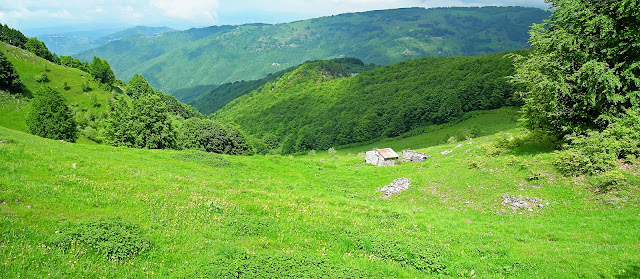




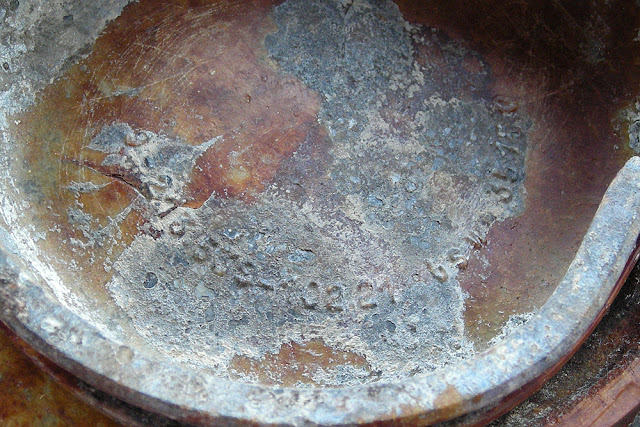











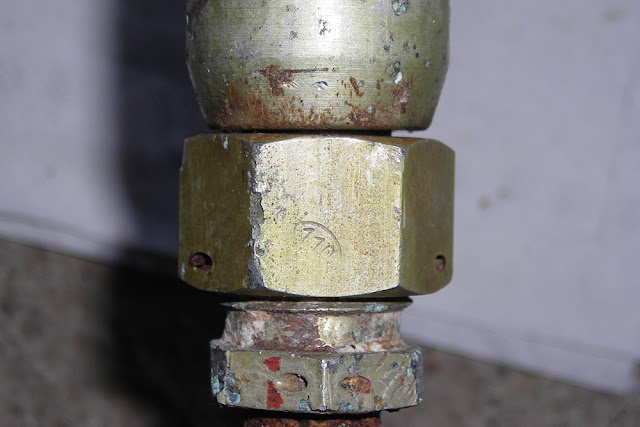

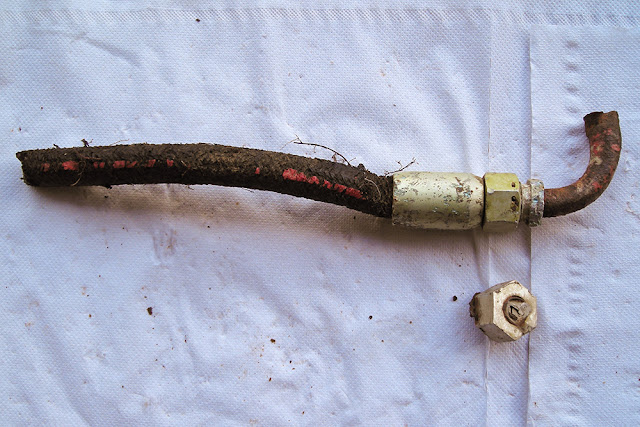




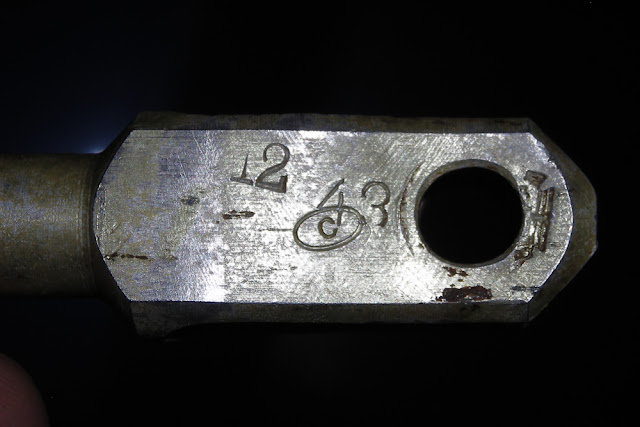

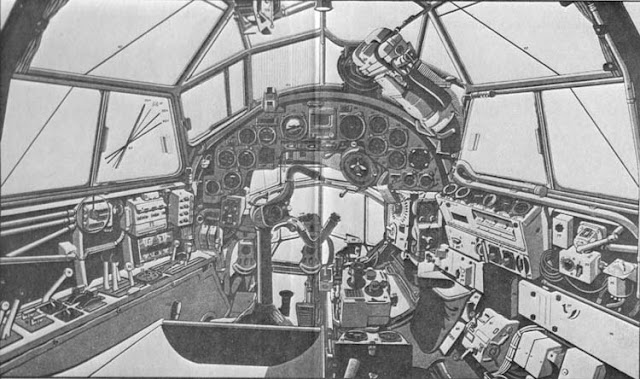


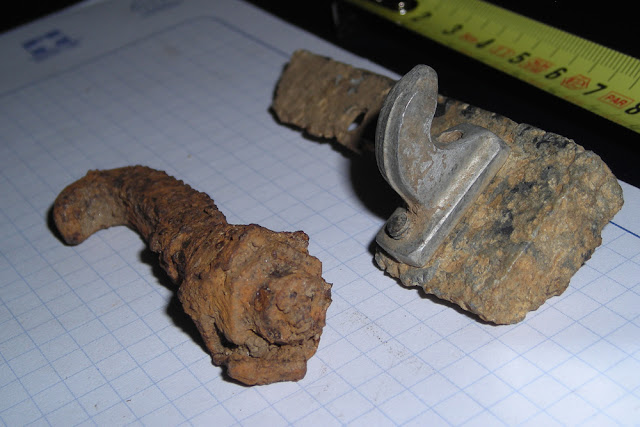


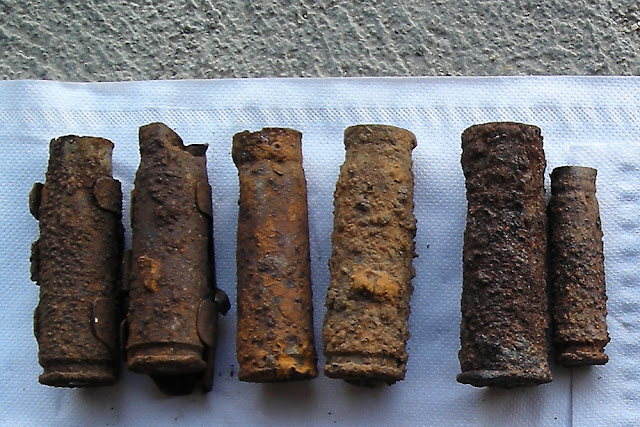






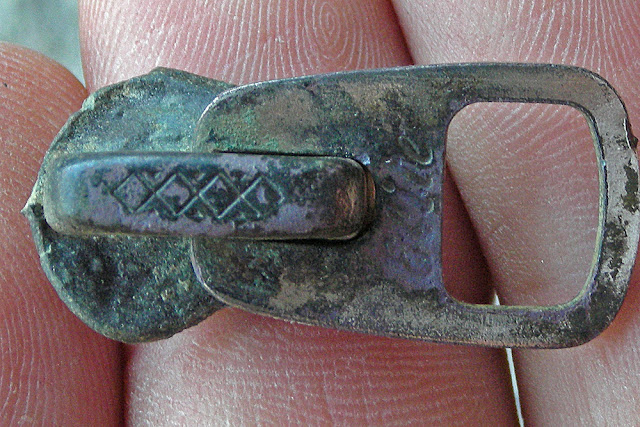



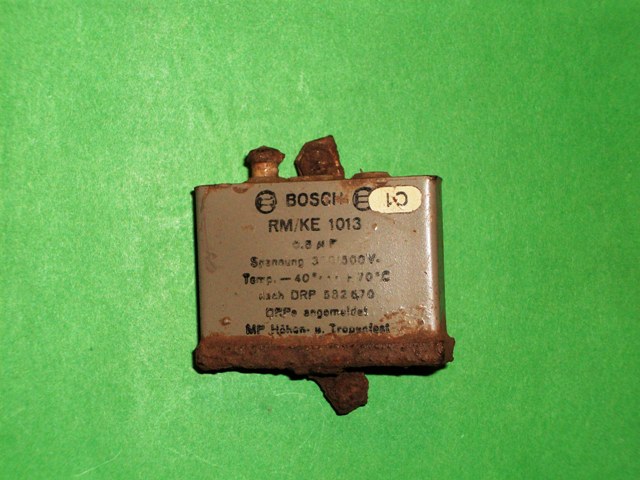







QE9s3HEEF8BQrkLI4oVw~~60_58.JPG)
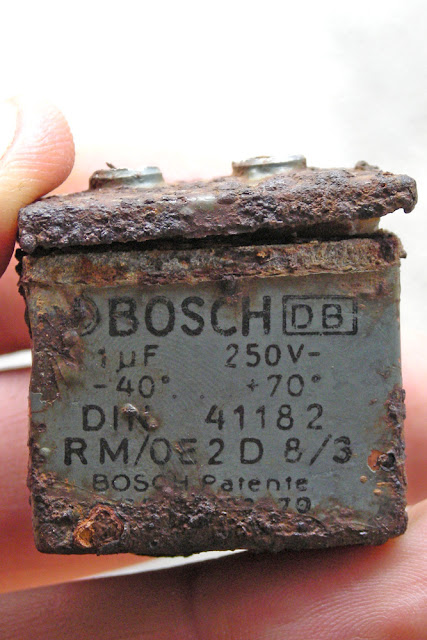




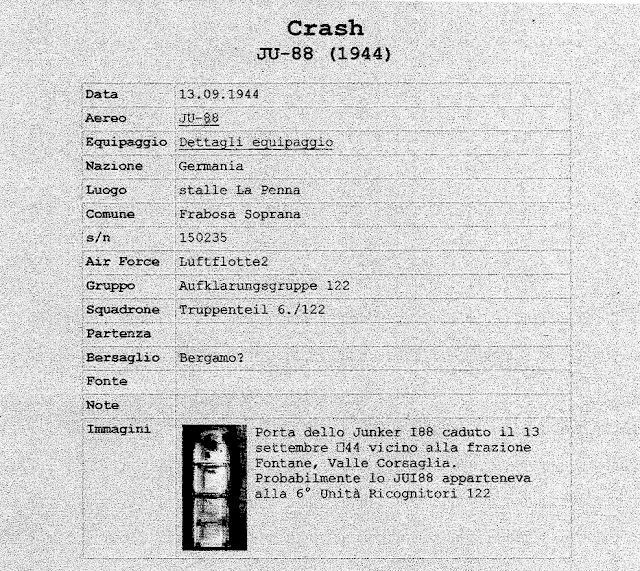






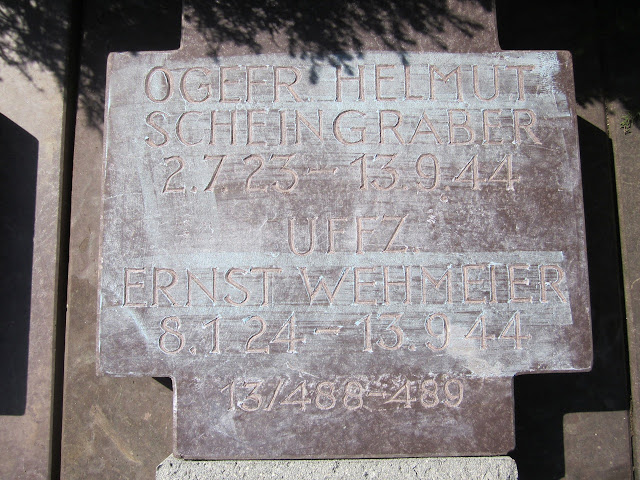
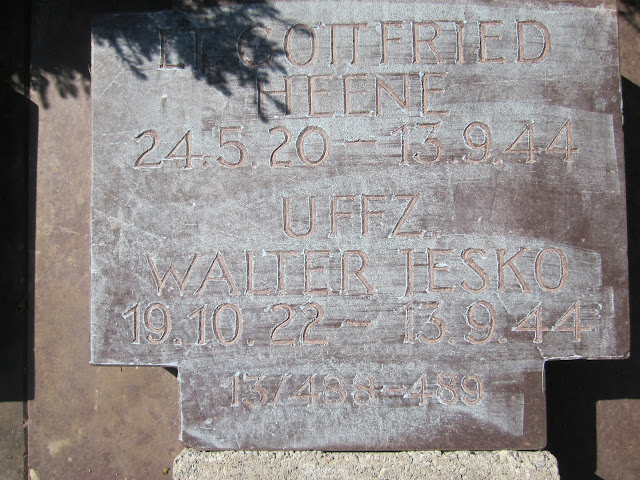




Una storia incredibile e allo stesso tempo appassionante, che ho ripercorso leggendola con i passi dell'investigatore.
RispondiEliminaGrazie per aver riportato in vita questo accadimento, attraverso il quale finalmente quattro soldati ignoti caduti in servizio potranno avere un nome sulla propria tomba. E complimenti vivissimi a chi ha curato l'indagine e a tutti coloro i quali si sono adoperati per riportare a galla la verità. Di persone come Te e come voi ce ne dovrebbero essere di più, perchè la cosa che davvero uccide un soldato caduto in guerra non è la ferita...ma l'oblìo.
Marco Marzilli
Ottimo lavoro davvero impressionante
RispondiEliminaGrazieee
EliminaSono rimasto colpito dalla tenacia della sua ricerca e le trasmetto i miei sinceri complimenti.
RispondiEliminaCome scrive giustamente il sig. Marzilli "la cosa che davvero uccide un soldato caduto in guerra non è la ferita...ma l'oblio."
Non sono un appassionato del secondo conflitto mondiale, provo troppo orrore alla sua idea.
Ogni tanto però vado a trovare quelli che io chiamo i "ragazzi di Costermano" e ho dedicato a loro un mio video, in tre lingue, interamente realizzato amatorialmente da me.
Il link del video in italiano è
http://www.youtube.com/watch?v=IqqEWgn3_wQ
Purtroppo non credo ne in Dio ne in un Aldilà, se no avrei piacere di pensare che ora quegli aviatori stiano meglio.
I miei complimenti ancora.
Cordialmente,
Stefano
Mantova
Grazie davvero per l'apprezzamento.
RispondiEliminaCol cimitero di Costermano sono in contatto, pare ci sia anche qualche news e forse a fine anno verranno finalmente poste le lapidi tombali coi nomi dei 4 aviatori...
Sono stato ieri a Costermano, per una delle mie periodiche visite ai caduti tedeschi.
RispondiEliminaHo cercato e trovato la lapide 13-488/489.
Mi sono permesso di fotografarla e non per curiosità morbosa, ma con molto rispetto verso chi non c'è più.
Se non ha mai visitato quel cimitero, le posso mandare la foto della lapide.
Se ha visto il mio video che le indicai nel post precedente, vedrà il campo dove sono sepolti vicino all'ossario comune.
Di nuovo tutti i miei complimenti per la sua ricerca.
Quei ragazzi ne sarebbero contenti, se lo potessero sapere...
Stefano
Mantova
Bravo, io non ci sono ancora stato, prima o poi lo farò.
EliminaBellissima storia,le faccio i complimenti per la ricerca.
RispondiEliminaGrazieee
EliminaComplimenti per questa stupenda ricerca considerando che l'hai risolta tutta da solo...
RispondiEliminaBravo Claudio ;-)
Fabio
Beh, non ero proprio da solo...come ho scritto tra comuni amici persone varie che mi hanno aiutato non mi considero solo...
EliminaComunque grazie per aver avuto la pazienza di leggerlo
Grazie per la visita e il commento. Appena riesco correggo anche l'articolo.
RispondiEliminaMi pare difficile fosse una missione legata alla distruzione del paese da lei nominato che credo sia in provincia di Firenze.
Credo fossero in qualche missione legata alle lotte partigiane in provincia di cuneo o sul versante francese dove si temeva uno sbarco alleato...
Però non ho nessun genere di prova a riguardo della mia ipotesi.
brau matot, 't stacc ben bulu!
RispondiEliminami i sugn 'd Cursaja e da cule paort lì, 'd'la Peunna, i sugn pasaoje 'n burdel 'd vòte sensa maoj veghe niente 'd cus i tè countà.
I pues 'd ma dite na cosa: 'l libre d'la parocchia d'la Scò u purija trouvesse a Cursaja, datou che bounanima 'd Don Luigi ou 'la facc 'l preve 'n'la Scò a partì dal 1970 ( o giù da lì)
Proeva magaora a parlenu cun don Leo: chiel u douvrija savej queicos.
Dato che custa sì a 'lè 'na bela storia 'd'la nòstra valada u sarija bel che t'la publicheisi dicò 'nsima a 'l boletin 'd'la valada Una Voce tra i Monti.
Se i tè ocassiun 'd pasè da Cursaja ferm 'te 'n s'la piassa e ciama 'd mi: it salutroeu ben vulontè.
Sta alegr e cuntinua parej
marin 'd butanica
mi ero perso questa storia.... Bravo veramente!
RispondiEliminaeh si, diciamo che questo blog alla fine della fiera è nato proprio per raccogliere questa storia...
EliminaWow, complimenti davvero! Sono arrivato sul questo blog cercando come togliere la ruggine e alla fine ho letto fino in fondo anche la storia dell'aereo. Complimenti per la bella testimonianza, grazie!
RispondiEliminagrazie milleeee
EliminaQuesto commento è stato eliminato dall'autore.
Eliminacomplimenti per la costanza e il desiderio di raccontare una storia che comunque ha un valore. Certo che per molti quel che è successo è stata una punizione solo parziale per tutte le stragi commesse a quel tempo, ma lo stesso non posso fare a meno di pensare che erano ragazzi, sicuramente maturati molto più in fretta di noi, ma comunque sempre ragazzi, e che solo il caso ha voluto che non ci fossimo noi, a quel tempo o in uno attuale simile per crudeltà e stupidità.
RispondiEliminaLeopoldo, Comacchio
si guarda io ho avuto un nonno deportato in campo di prigionia...però mi è sembrato giusto raccontare la storia e arrivare ad avere un nome su una lapide. in fondo se mai qualche parente cercasse il nome del suo avo con google troverebbe una risposta alle sue domande...
EliminaRicostruzione appassionante. Ho riletto tutto un paio di volte e passato il link ad amici appassionati di storia locale. Tanti complimenti!
RispondiEliminagrazie mille a te per la visita..
EliminaSalve ho letto più volte il suo articolo di ricerca e le faccio i più sentiti complimenti.Abito in queste zone e mia nonna è nata e cresciuta alle Fontane quindi sono luoghi speciali per me.Da poco mi sono appassionato di ricerche con metal detector e proprio questo fine settimana ho fatto ricerca sul punto ďimpatto alle stalle Penna ma senza risultati.Mi farebbe molto piacere avere aiuto nel conoscere la zona e poter recuperare qualche cimelio essendo così interessato alla storia delle nostre vallate.Grazie in anticipo
RispondiEliminascrivimi in privato claudio82clod @ gmail.com
EliminaBella storia..molto interessante.
RispondiEliminagraziee
EliminaBuonasera, leggo ora la sua ricerca...mia madre mi raccontò di questa vicenda dicendomi che molti frabosani andarono in loco. Mi disse che lei vide i resti di un soldato, forse un arto.
RispondiEliminaMi interessa la pietra incisa datata 1581, probabilmente la più antica di cui abbia avuto notizia. Vorrei poterla incontrare, se possibile mi contatti a ecomuseomarmo.frabosa@gmail.com
Grazie
Alessandro Barabino